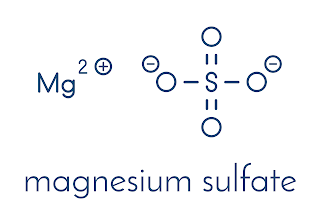22 MAY WORLD PRE-ECLAMPSIA DAY
I am on call and about to leave my house at 6:30, and I get a phone call that a pregnant patient has been admitted to labour ward with eclamptic seizures. The medical officer on call was concerned that despite loading the patient with Magnesium Sulphate the patient had another seizure and was considering other agents such as intravenous Lorazepam and Diazepam. Instantly a lot of things go through my mind, regarding this patient's management. We know that stabilizing the mother takes priority over the baby, and we know once the mother is stable and loaded with Magnesium Sulfate and her blood pressures are controlled we can plan the delivery of the baby which is the ultimate treatment for pregnancy-induced hypertension.
Pre-eclampsia is a severe complication related to hypertension affecting pregnant women. It can be life-threatening for the mother and the baby. It is still on top of the list of the causes of maternal mortality. In our facility, we had about 3 maternal deaths due to severe pre-eclampsia in 2023. Two patients passed away due to cerebral haemorrhage, one patient changed condition after being intubated with eclamptic fits and demised. Problems with pre-eclampsia can start from week 20 of pregnancy and can last up to 6 weeks after delivery.
It is important to know that pre-eclampsia is a
common disease with an incidence between 2-8%, and it affects 4.1 million women
per year worldwide. It is responsible for 9% of maternal deaths in Africa and
Asia and 26% in Latin America. Things look better in high-income countries however 16% of maternal deaths are seen in African Americans and Latin Americans.
Pre-eclampsia can start with slightly
elevated blood pressure and proteinuria, it is a progressive disease that can
bring complications such as eclampsia, haemorrhagic stroke, haemolysis,
elevated liver enzymes and low platelet count (HELLP) syndrome, placenta
abruption, renal failure, and pulmonary edema. I never forget our patient who
was admitted for severe early onset pre-eclampsia at 28 weeks, and we were
monitoring her blood pressure and blood tests regularly trying to buy time to
deliver the baby later, who ended up with an abruption placenta, massive
haemorrhage, pulmonary edema, and ICU admission. We lost the baby, but the
mother survived.
The discovery of Magnesium Sulfate as an agent to
stop eclamptic seizures and prevent their recurrence has saved a lot of
lives over the years. Its use was introduced in the 1900s via an intramuscular
injection, however, it wasn’t until the 1920s that major controlled studies
demonstrated its superiority over other anticonvulsants.
We know that a lot of the adverse events in
pregnancy tend to repeat in subsequent pregnancies. Another agent that we
use very commonly in the ante-natal period is low dose Aspirin to decrease the risk of severe early onset
pre-eclampsia. Women who survive pre-eclampsia have long-term consequences such
as the risk of stroke, cardiovascular disease, and diabetes, and need to follow up
with their healthcare practitioners to keep those risks under control.




Comments
Post a Comment